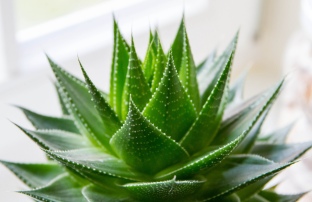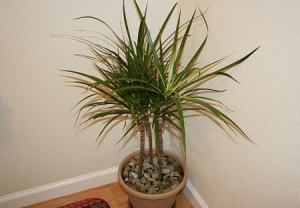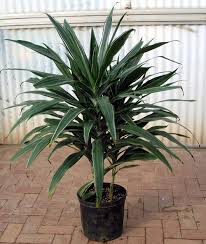The International Agency for Research on Cancer and the World Health Organization have concluded that 80% of all cancers are attributed to environmental rather than genetic factors, including exposure to carcinogenic chemicals, many of which are found in household cleaning products.
In the light of above mentioned studies and reports, it becomes absolutely necessary to employ permanent means to keep our indoor air clean and healthy, NASA study suggest the following mentioned plants to keep indoor air spic and clean. Isn’t this a relief and good news.
1. Aloe

This easy-to-grow, sun-loving succulent helps clear formaldehyde and benzene, which can be a byproduct of chemical-based cleaners, paints and more. Aloe is a smart choice for a sunny kitchen window. Beyond its air-clearing abilities, the gel inside an aloe plant can help heal cuts and burns. Aloe is a mild to moderate toxin to your pets. Please keep it out of their reach.
2. Spider Plant
Even if you tend to neglect houseplants, you’ll have a hard time killing this resilient plant. With lots of rich foliage and tiny white flowers, the spider plant battles benzene, formaldehyde, carbon monoxide and xylene, a solvent used in the leather, rubber and printing industries.
This plant seems to attract cats, but this plant is safe for cats and dogs.
3. Snake Plant

Also known as mother-in-law’s tongue, this plant is one of the best for filtering out formaldehyde, which is common in cleaning products, toilet paper, tissues and personal care products. Put one in your bathroom and it’ll thrive with low light and steamy humid conditions while helping filter out air pollutants.
This plant is toxic to both cats and dogs. If your pet ingested this plant, contact your local veterinarian.
4. Golden Pothos

Another powerful plant for tackling formaldehyde, this fast-growing vine will create a cascade of green from a hanging basket. Consider it for your garage since car exhaust is filled with formaldehyde. Golden pothos, also know as devil’s ivy, stays green even when kept in the dark.
This plant is also toxic to your pets. The symptoms are oral irritation, intense burning and irritation of mouth, tongue and lips, excessive drooling, vomiting, difficulty swallowing. Try to keep the plant out of their reach.
5. Red Edged Dracaena

The red edges of this easy dracaena bring a pop of color, and the shrub can grow to reach your ceiling. This plant is best for removing xylene, trichloroethylene and formaldehyde, which can be introduced to indoor air through lacquers, varnishes and gasoline.
Cats that eat the long, skinny fronds that are typical in the Dracaena plant family will vomit, sometimes with blood, become depressed and lose their appetites. Kittens can get a little wobbly and appear to be drunk. Luckily, these plants are not usually lethal and symptoms should disappear in 12 to 24 hours.
6. Weeping Fig (Ficus)

A ficus in your living room can help filter out pollutants that typically accompany carpeting and furniture such as formaldehyde, benzene and trichloroethylene. Caring for a ficus can be tricky, but once you get the watering and light conditions right, they will last a long time.
The creeping fig and the weeping fig are tempting for the cat and can be toxic if ingested in high quantities.
7. English Ivy

A study found that the plant reduces airborne fecal-matter particles. It has also been shown to filter out formaldehyde found in some household cleaning products.
This plant can be mildly toxic to pets. The symptoms are vomiting, abdominal pain, hypersalivation, diarrhea. Foliage is more toxic than berries
8. Warneckii Dracaena
Combat pollutants associated with varnishes and oils with this dracaena. The Warneckii Dracaena grows inside easily, even without direct sunlight. With striped leaves forming clusters atop a thin stem, this houseplant can be striking, especially if it reaches its potential height of 12 feet.
This plant can be toxic in both dogs and cats. The symptoms are in cats: dilated pupils, abdominal pain, increased heart rate and drooling. In both cats and dogs: vomiting, depression, inappetence, drooling, incoordination, and weakness.
9. Bamboo Palm

Also known as the reed palm, this small palm thrives in shady indoor spaces and often produces flowers and small berries. It tops the list of plants best for filtering out both benzene and trichloroethylene. They’re also a good choice for placing around furniture that could be off-gassing formaldehyde.
The Bamboo Palm is safe for all pets.
10. Peace Lily
Shade and weekly watering are all the peace lily needs to survive and produce blooms. It topped NASA’s list for removing all three of most common VOCs — formaldehyde, benzene and trichloroethylene. It can also combat toluene and xylene.
The Peace Lily is toxic to both cats and dogs. The symptoms are oral irritation, intense burning and irritation of mouth, tongue and lips, excessive drooling, vomiting, difficulty swallowing.







